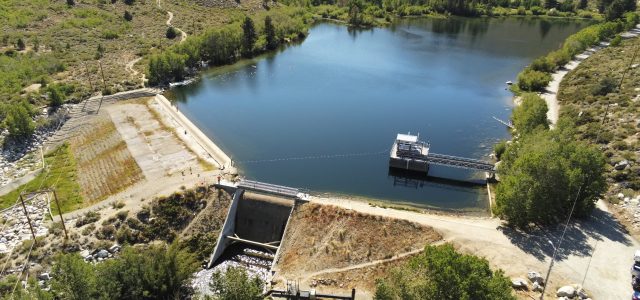They’re quiet, they capture crucial high-definition images and, most of all, they’re safer. Widely used in utility equipment inspections and wildfire mitigation efforts, drones have quickly become an essential tool for Southern California Edison (SCE) in its dam safety inspections, too.
With 83 dams in SCE’s hydroelectric system stretching from Catalina Island to Big Creek near Fresno, it’s easy to see why. In addition to safer and more cost-effective inspections, drones help SCE’s hydro team maintain the dams safely and effectively. “The drones have been a powerful tool and I think we can do a lot more going forward,” said Nicolas von Gersdorff, SCE’s chief dam safety engineer.
Future use of the drones includes FAA approval to fly outside the line of sight — which the FAA doesn’t yet allow — as well as the use of Artificial Intelligence and Machine Learning.
As is, the Dam & Safety group’s two Parrot Anafi drones—operated by two FAA and SCE Air Operations-authorized pilots observing the utility’s strict confidentiality policies and procedures—have greatly enhanced inspections of remote, difficult-to-access dams, efficiently delivering high-resolution images that identify minor issues like leakages and cracks before they become major problems.
Images that Patrick Le, one of the drone operators and an SCE engineer, said are further enhanced through technologies like LiDAR and 3D mapping. “Drones are just an excellent tool with speed, safety and practicality,” said Le of the unmanned aerial vehicles used for dam inspections since 2016. “We get measurable data and a bird’s eye view.”
In the winter, that data can come through as thermal imaging of powerhouses’ penstock pipes. This speed and capability is important when SCE needs to manage near-record snow in the system. And Le and his group are intrigued by LiDAR analysis and Structure from Motion, saying, “We essentially stitch a series of photos together in a 3D model to get something you can’t get with a typical visual inspection. Sometimes you can capture things you can’t see with the naked eye.”
Even more crucial are the drones’ elimination of the safety risks involved in worker inspections that require specialized equipment and training to physically access steeply sloped areas of a structure.
And, amid the COVID-19 pandemic SCE’s Meg Richardson pointed out another unexpected bonus. “Just looking at where we are with present times and COVID-19, inspections can be done via drone now instead of having people go out in groups,” said Richardson, an SCE senior advisor in Regulatory Affairs and Compliance. “I think it’s also a way to be innovative for what the future might look like.”
High-tech drones and cameras present opportunities galore for the Dam & Safety team to continue enhancing safety. “Technology like this sets forth that we can be better prepared because we are being innovative with the technology out there,” said Richardson. “We’re continuing to look at innovation on how to meet regulatory requirements as well as additional ways this technology can be used in what will be the new normal. It’s definitely a highlight.” BY PAUL NETTER



















